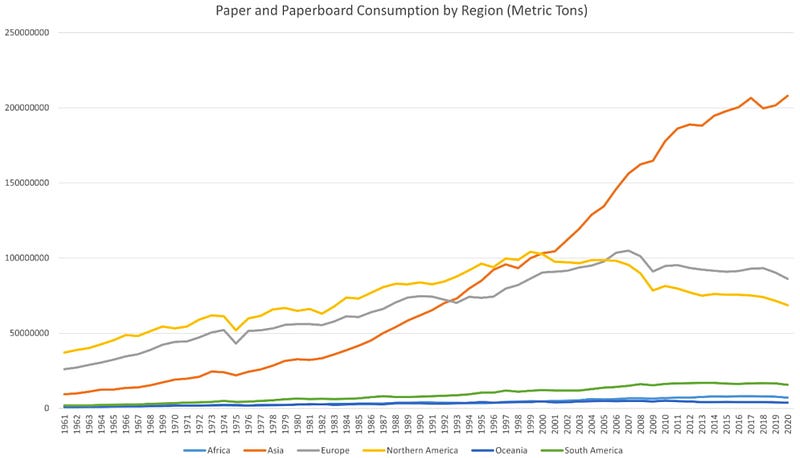The Transition to a Paperless Office: A New Era of Technology
Written on
The Evolution of the Paperless Office
The concept of a "paperless office" has been discussed since World War II, when forward-thinking individuals envisioned a future devoid of paper in the workplace. The rise of computers and electronic mail sparked predictions that the reliance on printed materials would diminish. Influential figures, from Vannevar Bush to Bill Gates, believed that paper would soon become obsolete.
However, the opposite occurred. As offices transitioned to computerized systems, paper consumption surged. Research by Abigail Sellen and Richard Harper in 2002, documented in their work The Myth of the Paperless Office, revealed that paper use in the United States escalated significantly during the 1980s and 1990s, even as computers became more prevalent. In fact, workplaces that adopted email experienced a staggering 40% increase in paper usage.
What explains this contradiction? Sellen and Harper identified that the ease of creating documents with computers led to an increase in communication, yet most office workers preferred to print these communications instead of reading them on screens. They cited several reasons for this preference:
- Superior Ergonomics: Paper offered better resolution and contrast, making it more comfortable for reading.
- Tactility: People could annotate documents with ease using pens or sticky notes, enhancing organization and accessibility.
- Visual Cues: Stacked papers served as reminders, acting as a physical memory aid.
The digital experience, in contrast, was less user-friendly. Screens lacked clarity, making documents harder to mark up or retrieve. Files stored digitally could easily be forgotten, whereas printed documents provided constant visual prompts.
As such, the idea of the paperless office seemed far-fetched. The Internet, rather than reducing paper consumption, fueled the production of print materials.
This brings us to recent developments. A 2022 study by Michael D. Briscoe from Colorado State University titled The Paperless Office Twenty Years Later: Still a Myth? offers fresh insights into this ongoing issue.

Briscoe analyzed data from the United Nations Food and Agriculture Organization, which reveals significant trends in paper usage across various regions. While this data encompasses all forms of paper and paperboard, it suggests that office paper usage likely mirrors these patterns.
The data indicates that in the U.S., paper consumption peaked around 1999, followed by a gradual decline starting around 2007-2008. By 2020, usage had returned to early 1980s levels.
Why the decline? Briscoe identifies two key factors:
- Smartphone Revolution: The introduction of smartphones around 2007, particularly the iPhone, enabled users to access emails, maps, and documents on-the-go, reducing the need to print.
- Cultural Shift: Attitudes towards digital reading transformed. In the 1990s, physical documents were deemed necessary for legitimacy, while by the late 2000s, many accepted screen-based reading as adequate.
As smartphone technology improved, screens began to rival paper in clarity, making it easier for users to interact with digital content without the need to print.
Nonetheless, this doesn’t mean the paperless office is fully realized. Personally, I've shifted to digital formats significantly since beginning my career in journalism in the 1990s. While I still print long books, my reliance on paper has diminished.
Technological changes can be unpredictable, often shaped by a combination of technological advancements and evolving cultural norms.
The first video titled "Paperless Office in Singapore | PREMIA TNC" explores how Singapore is advancing towards a paperless environment, showcasing innovative solutions being implemented.
The second video, "Realizing Paperless Office Experience with LTI's e-Office Solutions," discusses practical strategies for organizations aiming to adopt paperless solutions in their operations.